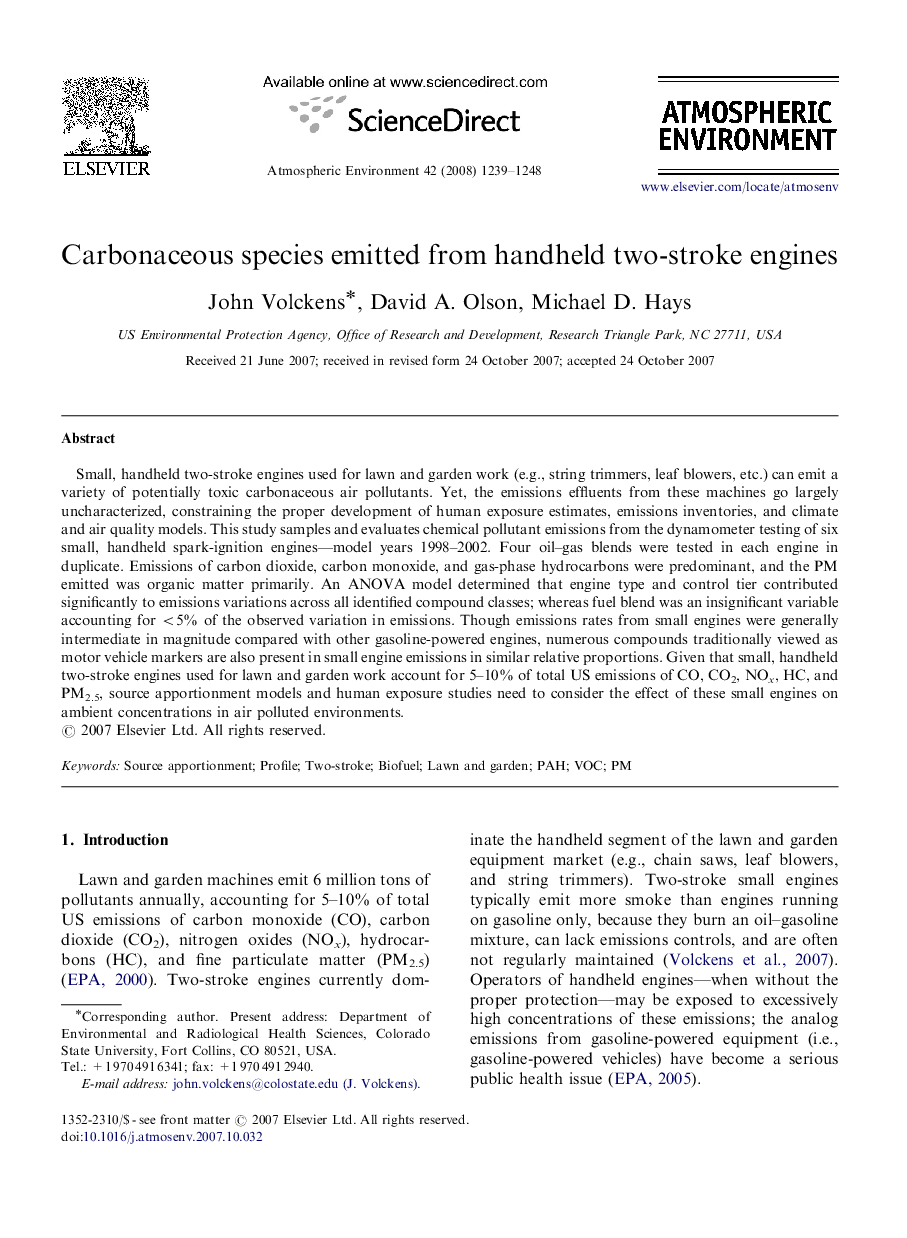| Article ID | Journal | Published Year | Pages | File Type |
|---|---|---|---|---|
| 4442791 | Atmospheric Environment | 2008 | 10 Pages |
Small, handheld two-stroke engines used for lawn and garden work (e.g., string trimmers, leaf blowers, etc.) can emit a variety of potentially toxic carbonaceous air pollutants. Yet, the emissions effluents from these machines go largely uncharacterized, constraining the proper development of human exposure estimates, emissions inventories, and climate and air quality models. This study samples and evaluates chemical pollutant emissions from the dynamometer testing of six small, handheld spark-ignition engines—model years 1998–2002. Four oil–gas blends were tested in each engine in duplicate. Emissions of carbon dioxide, carbon monoxide, and gas-phase hydrocarbons were predominant, and the PM emitted was organic matter primarily. An ANOVA model determined that engine type and control tier contributed significantly to emissions variations across all identified compound classes; whereas fuel blend was an insignificant variable accounting for <5% of the observed variation in emissions. Though emissions rates from small engines were generally intermediate in magnitude compared with other gasoline-powered engines, numerous compounds traditionally viewed as motor vehicle markers are also present in small engine emissions in similar relative proportions. Given that small, handheld two-stroke engines used for lawn and garden work account for 5–10% of total US emissions of CO, CO2, NOx, HC, and PM2.5, source apportionment models and human exposure studies need to consider the effect of these small engines on ambient concentrations in air polluted environments.
